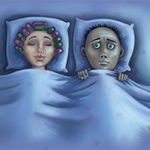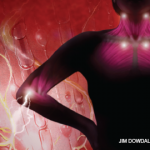Include the Patient Voice
Clinical trials increasingly include patient-reported outcomes, and it’s natural for patient-reported outcomes to make their way into the exam room. This new trend may provide important insights. Dr. Rogers expresses surprise at “the extent to which patients with type 2 lupus report type 1 symptoms.”
The study also serves as a proof-of-concept for patient-reported outcome measures being used in routine clinical practice to capture patient-specific information and improve providers’ diagnostic assessments. Currently, Dr. Rogers uses a purple paper form in her clinic—“purple for lupus” she explains. But her colleagues have also created an online version of the questionnaire that can be sent to patients through the electronic medical record and directly uploaded into the clinic note. According to Dr. Rogers, the patient reported outcome measures can be easily used by a practicing physician in a way that doesn’t slow down a visit and may improve its efficiency.
Although the purple form is two pages long, Dr. Rogers and colleagues are at work creating a shorter composite measure. Eventually, they intend to combine the patient-reported outcomes with physician-reported measures, thereby, improving the way physicians evaluate and measure the full spectrum of lupus symptoms.
“It’s an iterative process. We have not reached the final version of our composite measure. We are currently interviewing patients and collaborating with other lupus researchers,” says Dr. Rogers.
Improving Treatment
Because patients struggle with fatigue and chronic pain, symptoms that affect their daily lives, Dr. Rogers suggests healthcare providers incorporate patient input into care to “validate their [patient’s] lived experience of lupus.” Such validation can improve trust and patient outcomes.
“As doctors, we strive to make our patients better,” says Dr. Rogers. “Sometimes it can feel overwhelming when patients report myriad symptoms, especially symptoms for which there is no easy answer or quick fix.”
The patient intake forms make it possible to gather all symptoms efficiently, allowing more time during a visit to delve into the most pressing concerns and ensure easily dismissed symptoms, such as fatigue or centralized pain, are proactively addressed. “Patients want to be heard. And they want us, as rheumatologists, to manage all of their lupus symptoms,” she says.
The current treatment paradigm for fatigue, centralized pain and symptoms of polysymptomatic distress in SLE are based on those for primary fibromyalgia. Dr. Rogers suggests physicians discuss exercise programs, improved sleep and pharmacologic and non-pharmacologic options for the treatment of mood disorders and centralized pain with patients with type 2 SLE.


